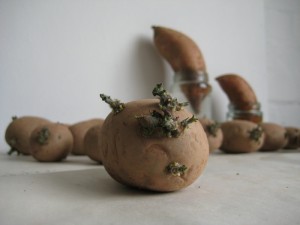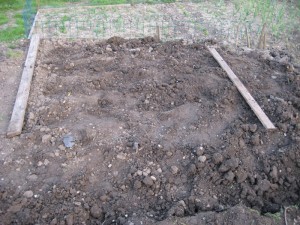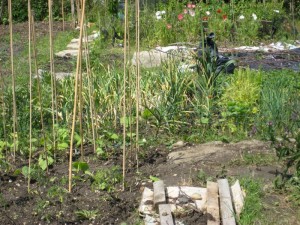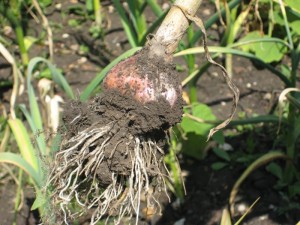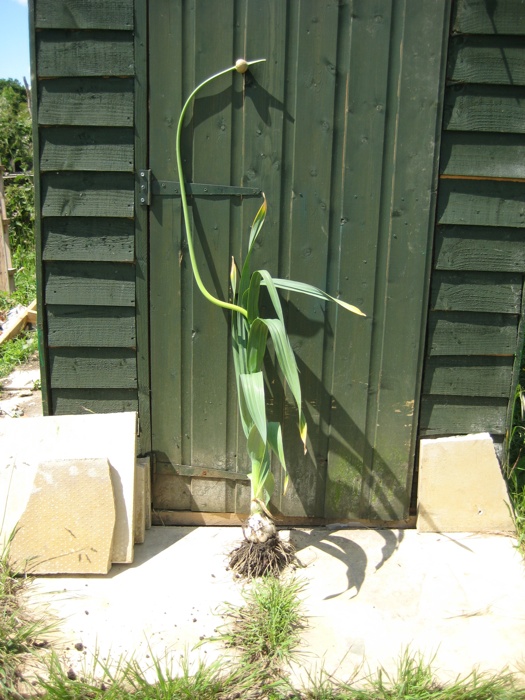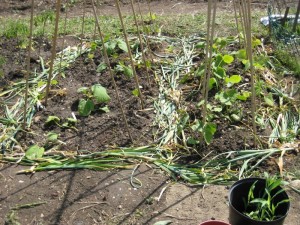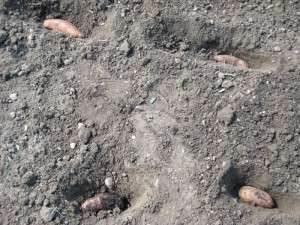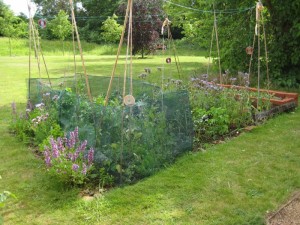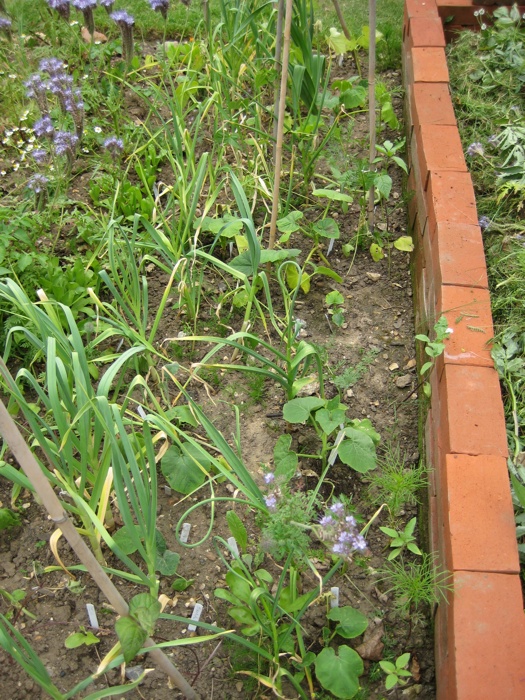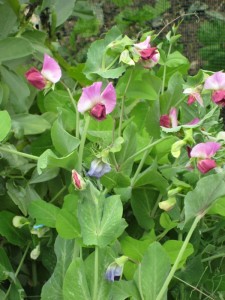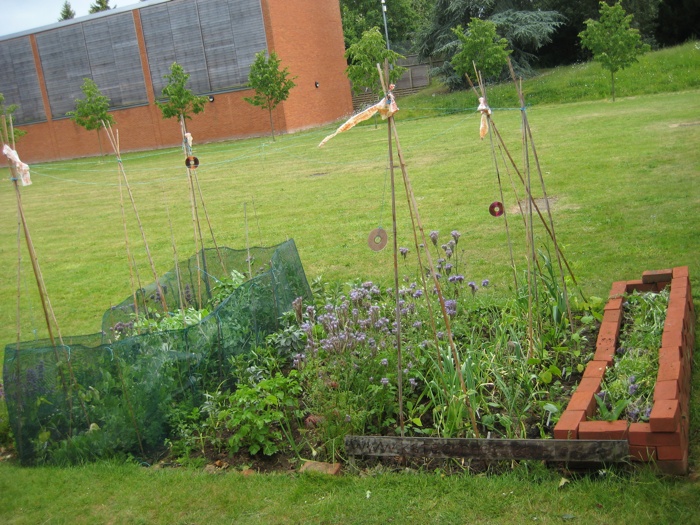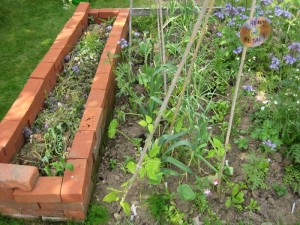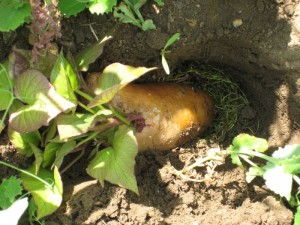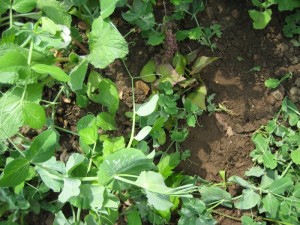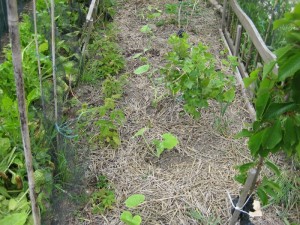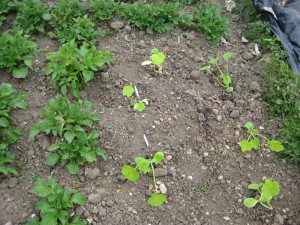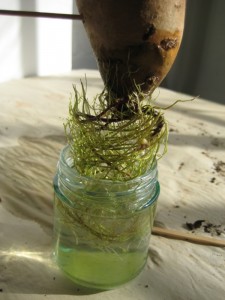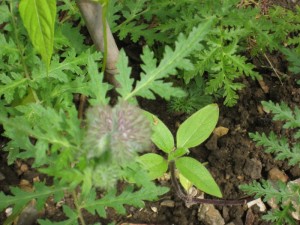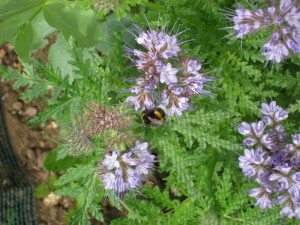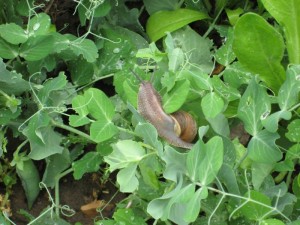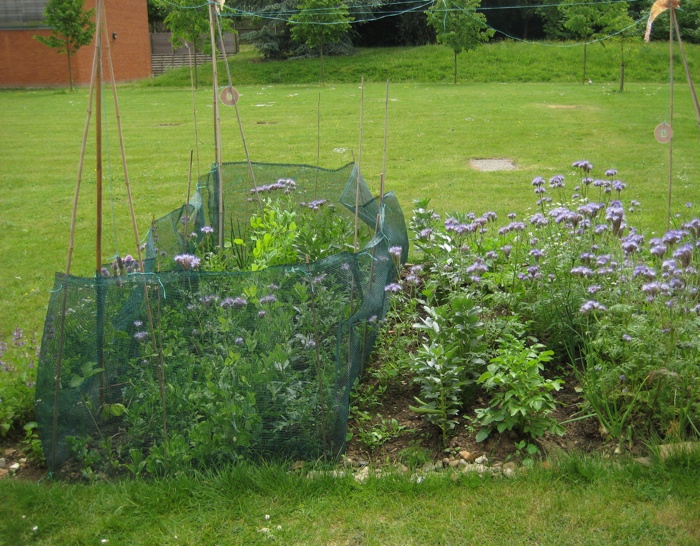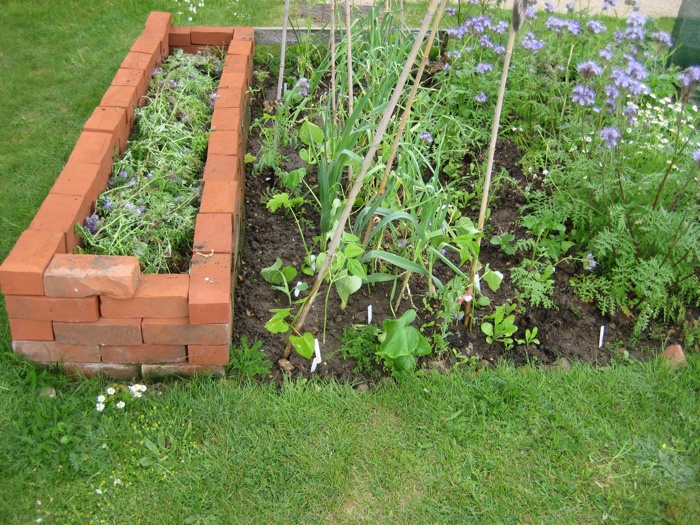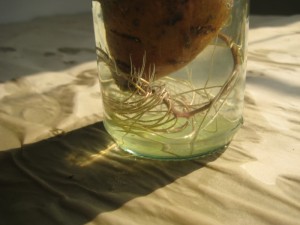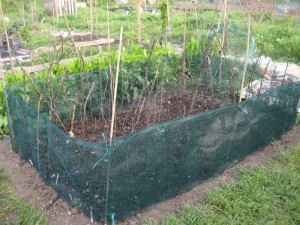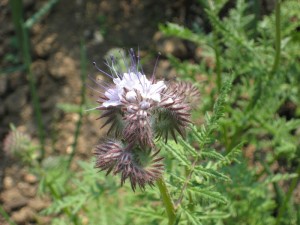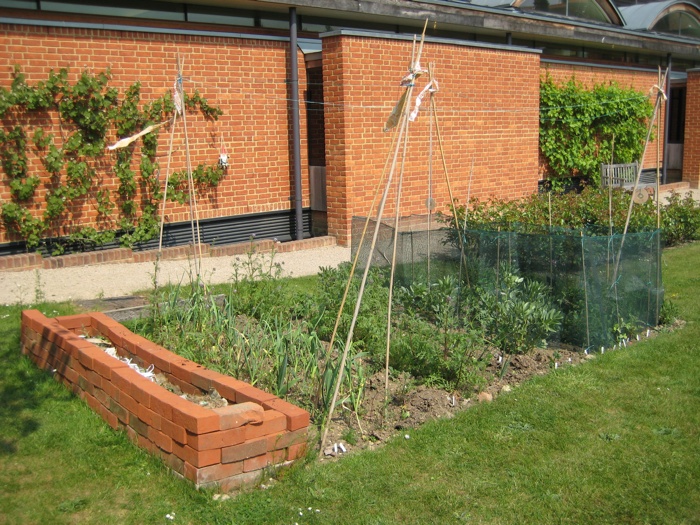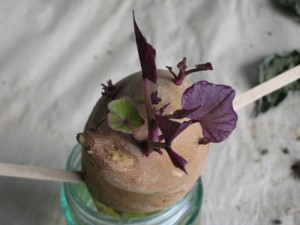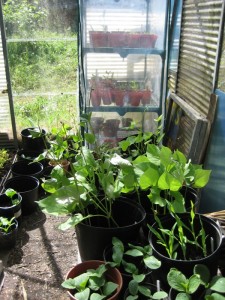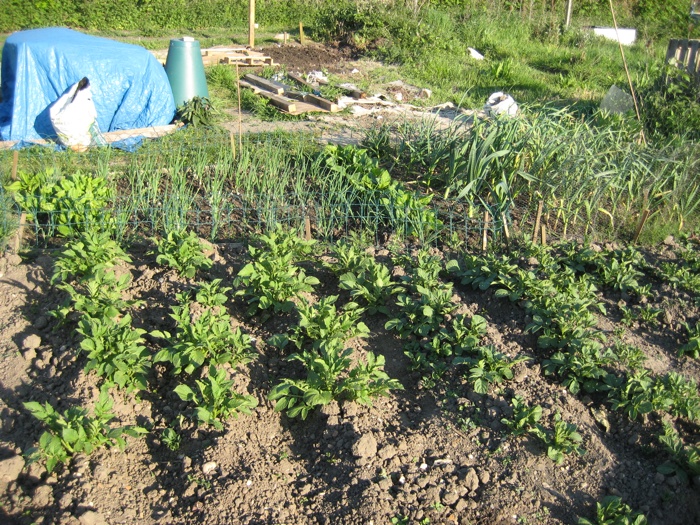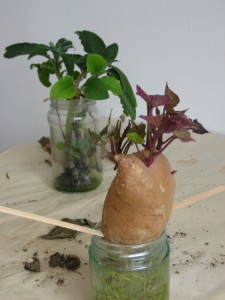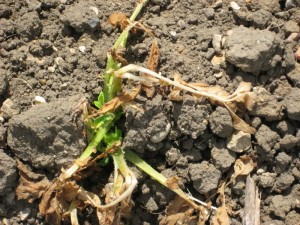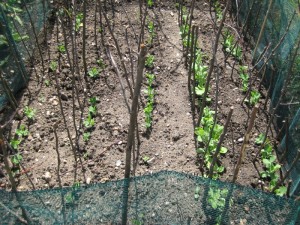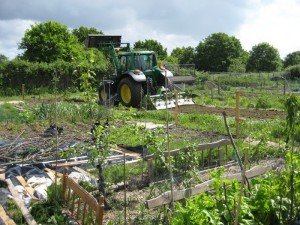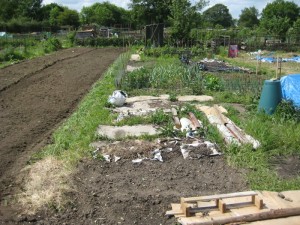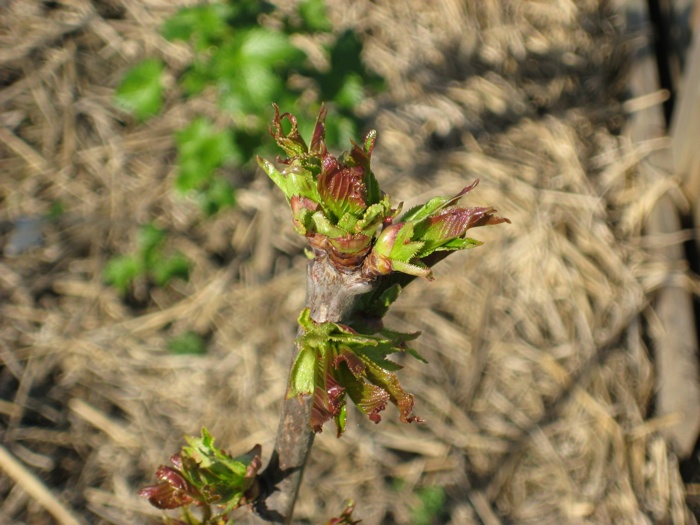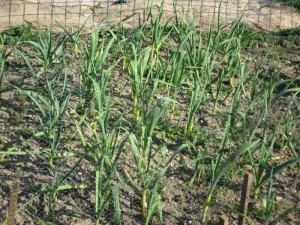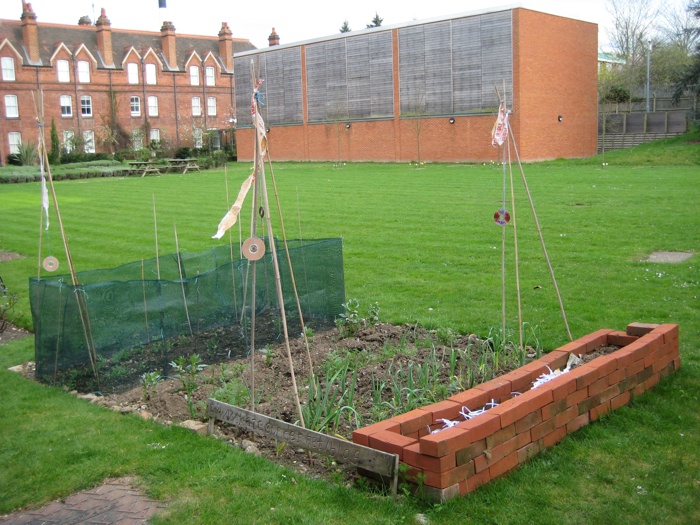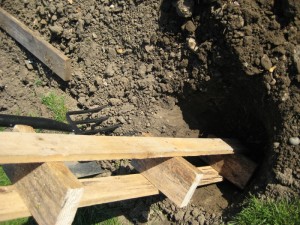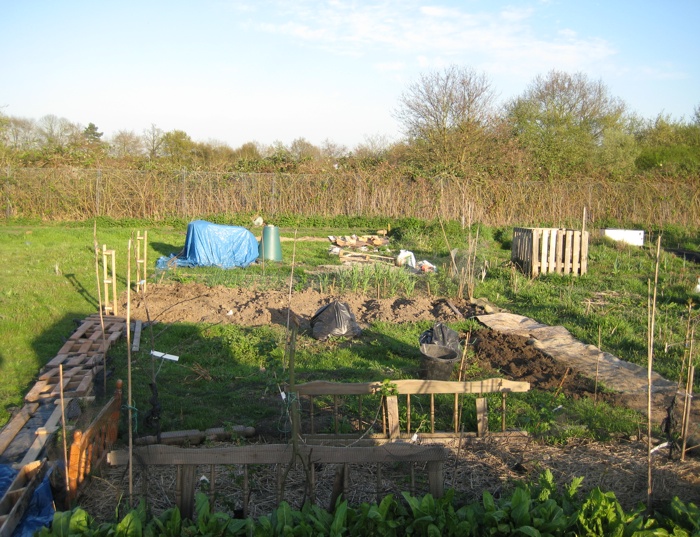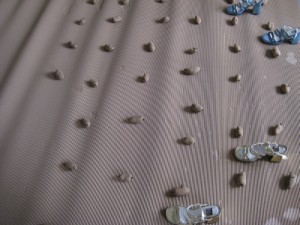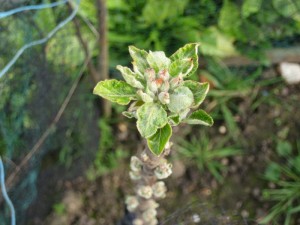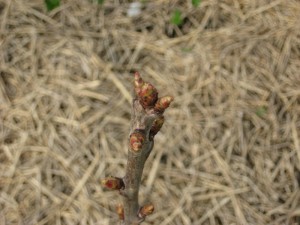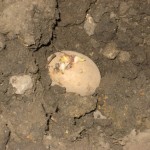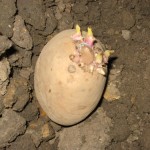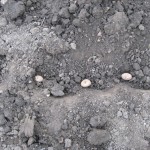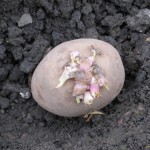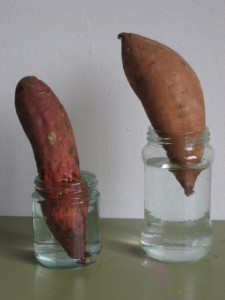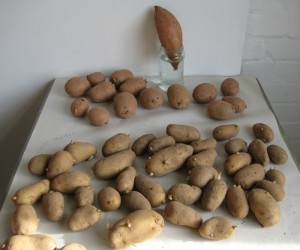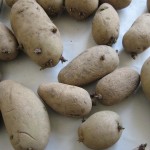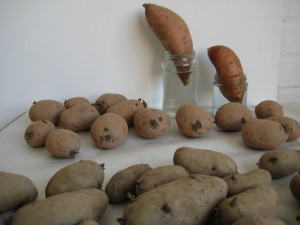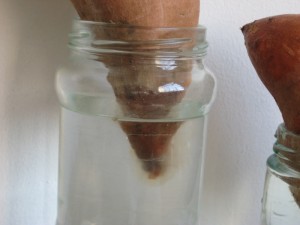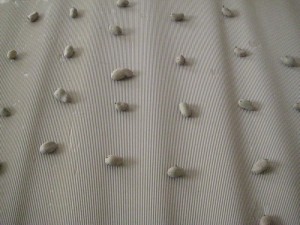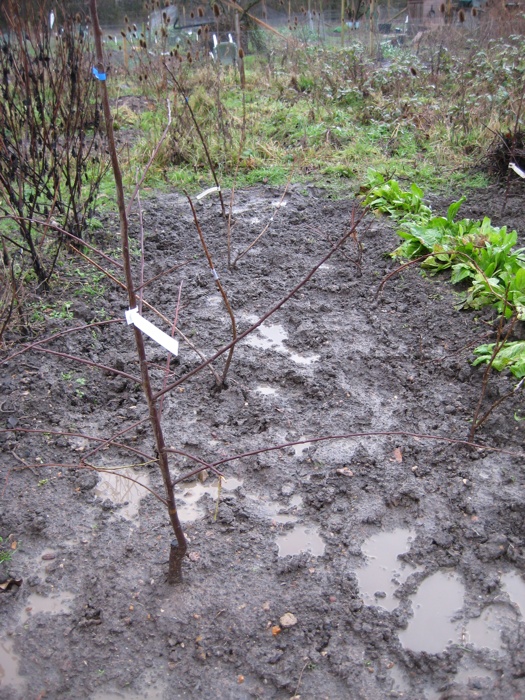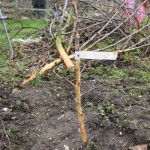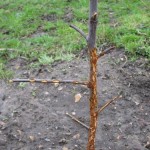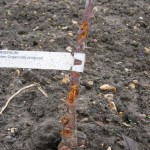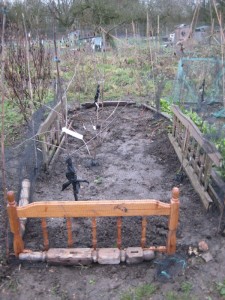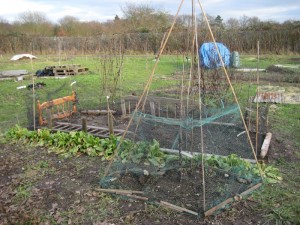Ella Montt was at Allotment Plot at MERL on 3 March. She had not visited this aspect of the Plot since January, because she had been occupied with other aspects elsewhere. The previous day there had been sun, but the day was bitterly cold, and the sky was grey. Ella Montt examined the state of the Allotment Plot, some of the bricks that formed the Brick Composter were out of position, chaotically fallen out of place. Last years remaining Brassicas were now stripped skeletons punctuating the Plot. The overwintered Broad Beans and Peas showed evidence of predator attack and the harshness of winter. Most of the Onions seemed to have survived. The Garlic was perhaps predictably looking the most productive of the overwintered vegetables.
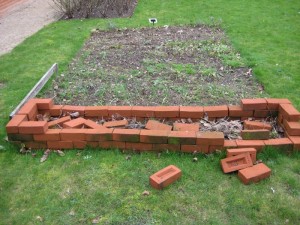
It was time to remove weeds to the Composter, redefine the Plot and neaten the edges. Ella Montt collected gardening tools from the shed. Green Manure plants Phacelia that had been sown back in Autumn 2010 were left growing scattered across the Plot. A solitary Crocus was in bloom. Stinging Nettles seedlings existed within the Plot, but were transported to the Composter with the notion that they might establish themselves within its boundaries as a welcome addition in pest control. It was noted that Mint rhizomes were extending in different directions beyond their previous area. Further evidence of this activity will be carefully monitored.

The Brick Composter was already composed of 91 bricks so Ella Montt utilized a wheelbarrow to collect a further 29 bricks from an amount that sits stacked beside the shed. The additional bricks were piled to complete the Brick Composter, a total of 120 bricks, (the same number of bricks used by Carl Andre in Equivalent VIII).
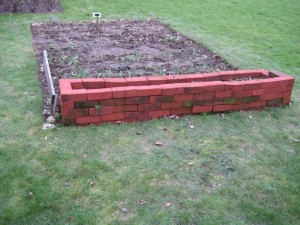
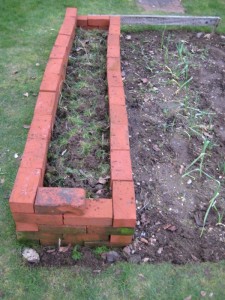

The earthquake and tsunami in Japan on March 11th 2011, devastated and obliterated the lives of human and non human species. The water of the tsunami washed away towns, bodies, organised mechanics of the human condition, such as transport vehicles, (land or water-based), business, cultivated growth of plant life and the everyday aspect of life into non life. The shock of this realization turned into further panic due to the failing cooling systems of nuclear power plants that were affected by the power of the planet’s own vital energy system that had caused the catastrophe.
Some of the human species remained convinced that nuclear energy was essential to human ways of life on Earth, while others wished that the nuclear industry should be dismantled in favour of safer ecological systems to generate energy. Ella Montt had never liked the nuclear industry and was most concerned for those in Japan, those that had lost their lives and those that had survived, both had their lives altered in the time span of minuets or seconds as the ground shock and later as the waves swept over the land. Planet Earth is a living organism, but this can be forgotten. Everything returns to the materials of the planet from which it has animated. Atoms drift, form and flux in the atmosphere surrounding the astronomical object.
On March 17th 2011, six thousand miles away in Japan there was still a state of panic and emergency, because of the on going conditions at the nuclear power plants. (Nuclear power no thanks!) Thousands of lives were lost in the tsunami. Bodies had been washed out to sea or covered by the wreckage of the flood. The mess and mass of residue remains piled for miles along the coastline. Some of the coastline had dropped at the time of the earthquake which allowed the tsunami to then sweep further in land. The conditions of global warming v the conditions of catastrophe from nuclear energy, if the world is contaminated with radiation what good is it to anyone anyway? Energy systems can be established through other means that are more sustainable solutions and not built on fossil fuels or nuclear power.
Ella Montt mused on why humans need catastrophe in order to realize thought processes that enable change. Progress is often not a linear process. Science develops systems and systems can generate progress, but power can generate a system that is blind to the future. The future is hidden tread carefully.
The sun broke through the misty cloud haze. Ella Montt prepared to plant 15 Lady Balfour Main Crop seed Potatoes, EM adjusted the tripod and digital video camera. Eve Balfour stepped out of MERL’s library archive and walked across the garden to join Ella Montt at the Plot. EM handed EB a fork and EB started to prepare the soil. Ella Montt went to the shed to fetch a wheelbarrow and then pushed it up the path amongst the trees towards the garden’s composting area. EM shovelled some of last year’s compost in to the wheelbarrow and headed back down the wooded bank to EB. Together they carefully dug a row of eight holes and then Ella Montt placed a Potato in each earth cavity with the Potato Chits facing upwards. EB covered the Potatoes and added extra compost from the wheelbarrow making Mole Hill type mounds over each one. Ella Montt placed a seed label by each mound to mark the position. EB and EM then dug another row of seven holes and Ella Montt placed the last seven Potatoes in their respective holes. Bob Flowerdew had advised to dig holes as big as a saucepan and Ella Montt remembered this. A note was made to acquire Comfrey roots for the Plot. Comfrey is an excellent plant food for Potatoes, Tomatoes and compost. EM and EB shared Ella Montt’s thermos of plant-based tea whilst they discussed the Plot.
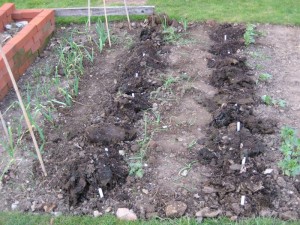
When EB went back to the rest in the library archive Ella Montt planted 4 x 3 sticks of dried Bamboo at each corner of the Plot in triangular formations. It was somewhat early in the year to be assembling Climbing Bean supports, but Ella Montt had decided that the Heavy Metal CDs needed to be reinstated to the Plot to try to ward of predators. Ella Montt attached the CDs with last years blue plastic string to the Bamboo supports. The Heavy Metal CDs will swing with the breeze and create a slight disturbance around the Plot that may interfere with pigeons feeding, but will not deter any slugs. Ella Montt then applied pieces of Fragile Handle With Care packaging tape that had been saved from an incoming package.
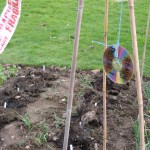

Ella Montt was in the studio, it was March 24th 2011, two days before another March in London against government spending cuts. This March was due to be as large as the Anti War March in 2003. Ella Montt hoped it would remain peaceful. What would be the point of violence breaking out between police and protestors when police are also being cut? The police should also be marching. Ella Montt was in no mood to pussyfoot around; she slipped off her 4″ heel gold dance shoes and left them standing amongst the field of chitting Potatoes on the studio floor. EM put on her muddy earth footwear, reached for her bike helmet and reflective visibility vest and then strode down the corridor. Once outside she unlocked her bike and cycled off across the campus to go to the Allotment Plot at MERL. It was almost two weeks after the Japanese earthquake and tsunami, and still there was an on going nuclear crisis at Fukushima.
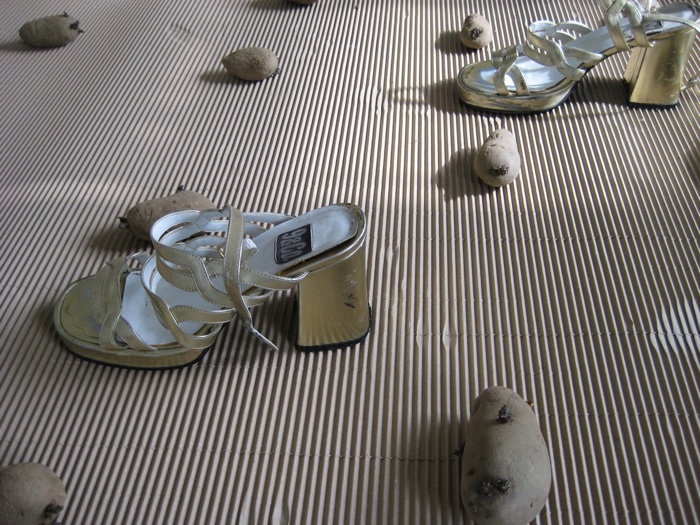
The weather in the South East of the UK was above normal average temperatures for the time of year. A weatherman said that the 24th March in the UK was warmer than South of Spain, but there was no suggestion that the warmth was to do with any kind of radiation cloud that had drifted 6000 miles around the planet, unlike the radiation cloud that travelled across Europe from Chernobyl disaster in 1986. The Japanese have so far been able to avoid a meltdown, but the situation may not be contained for months, meanwhile radiation continues to leak and the reactor sits dangerously close to a fault line as do others dotted around the Earth’s surface. In 1986 humans had stood outside the public house on Charlotte Road in London enjoying the exceptionally warm weather whilst sheep on Welsh mountains absorbed the radiation.
Ella Montt had arrived at the Allotment Plot at MERL, collected tools from the shed and was now forking over some unseeded parts of the Plot. EM piled more soil on to the Lady Balfour Potatoes earthing them up as a preventative against frost. There had been virtually no rain all month and the weather forecast implied rain was unlikely for almost another week. The temperature felt like May or June, but in reality it was not.
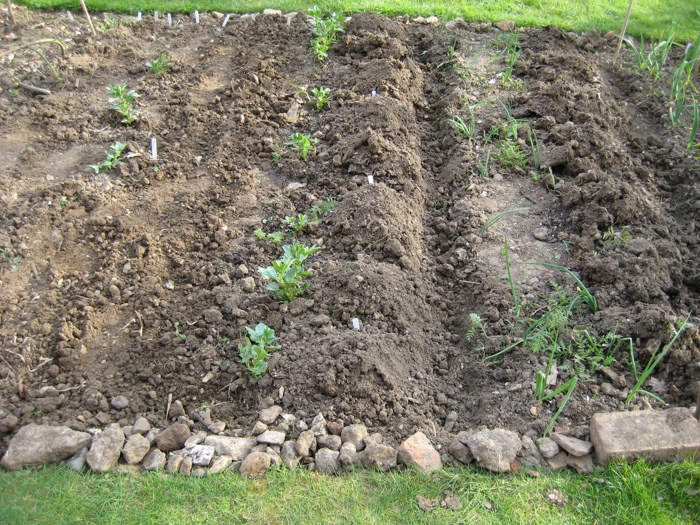
The plants that had managed to survive the winter (some had not) were starting to grow again. The Garlic was looking very good. Ella Montt prepared to plant some more Peas and Broad Beans to fill in the gaps where plants had perished or been eaten. Other seeds were in the process of germinating in pots at the fixed up greenhouse at another location.
As a bumblebee flew by Ella Montt proceeded to plant more seeds. First the overwintered row of Pea Meteor was filled in again. Followed closely by rows of Pea Kelvedon Wonder, Pea Ambassador, Pea (Edible Podded) Ezetha’s Krombek Blauschokker, and Pea (Mange-tout) Oregon Sugar Pod. Then Ella Montt planted some more Broad Bean seeds to try to fill out the broken rows of overwintered Broad Bean Supersimonia and Superaquadulce. Between the two rows of Broad Beans Ella Montt planted a row of Carrots Rothild and Autumn King, then a row of Parsnip Halblange White and a row of Leek Blue Green Winter. Beyond the Garlic, close to the Brick Composter, Ella Montt planted a mixed row of Leaf Beet Rainbow Chard and Kale Halbhoher Grun Krauser. Next to the Herbs at the other end of the Plot, Ella Montt planted a mixture of Onion Ramrod, Dill, Flat Leaved Parsley, and Coriander Santos. The final planting of the day around the Plot was a mixture of Companion Planting flowering seeds, Cosmos Cosmea, Cosmos Orange Cosmea, Borage, Pot Marigold Calendula Officinalis and Nasturtium Organic Mix. Ella Montt knew that Allotment Plot at MERL is small comparatively in size to Allotment Plot 326, but was very conscious of the need for crop rotation whilst she planted. Crop rotation means that no like for like plant should be planted in the same place as the previous year, in order to minimize disease and fertility of the soil.
Whilst Ella Montt was planting she noticed the Mint rhizome had extended out of the Plot and in to the grass of the lawn. This was somewhat of a surprise and an unintentionally thought process. Perhaps on the next visit an attempt will be made to revert this rhizome back in to the boundaries of the Plot. Ella Montt was aware that Mint rhizomes were growing within the Plot, but would need to consult Deleuze and Guattari about removing plant structures that drifted outside of the Plot to see if they needed to be reinstated within the Plot.
At Allotment 326 on Tuesday 22nd, earlier in the week, Ella Montt had planted 15 Madeleine First Early Potatoes that had been chitted in the studio and then EM had carried on digging. Ella Montt had much to do at Allotment Plot 326; there was a never-ending task to try to destroy the rhizomatic growth of the brambles at the Plot. There was also a constant urgency looming over Ella Montt that if a fence was not applied to Allotment Plot 326, rabbits would eat any other vegetable that would be planted at the Plot. Luckily at the moment the rabbits were keeping the encroaching grass well trimmed. Ella Montt was not aware of rabbits existing in the garden at 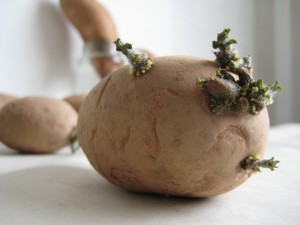 MERL.
MERL.
